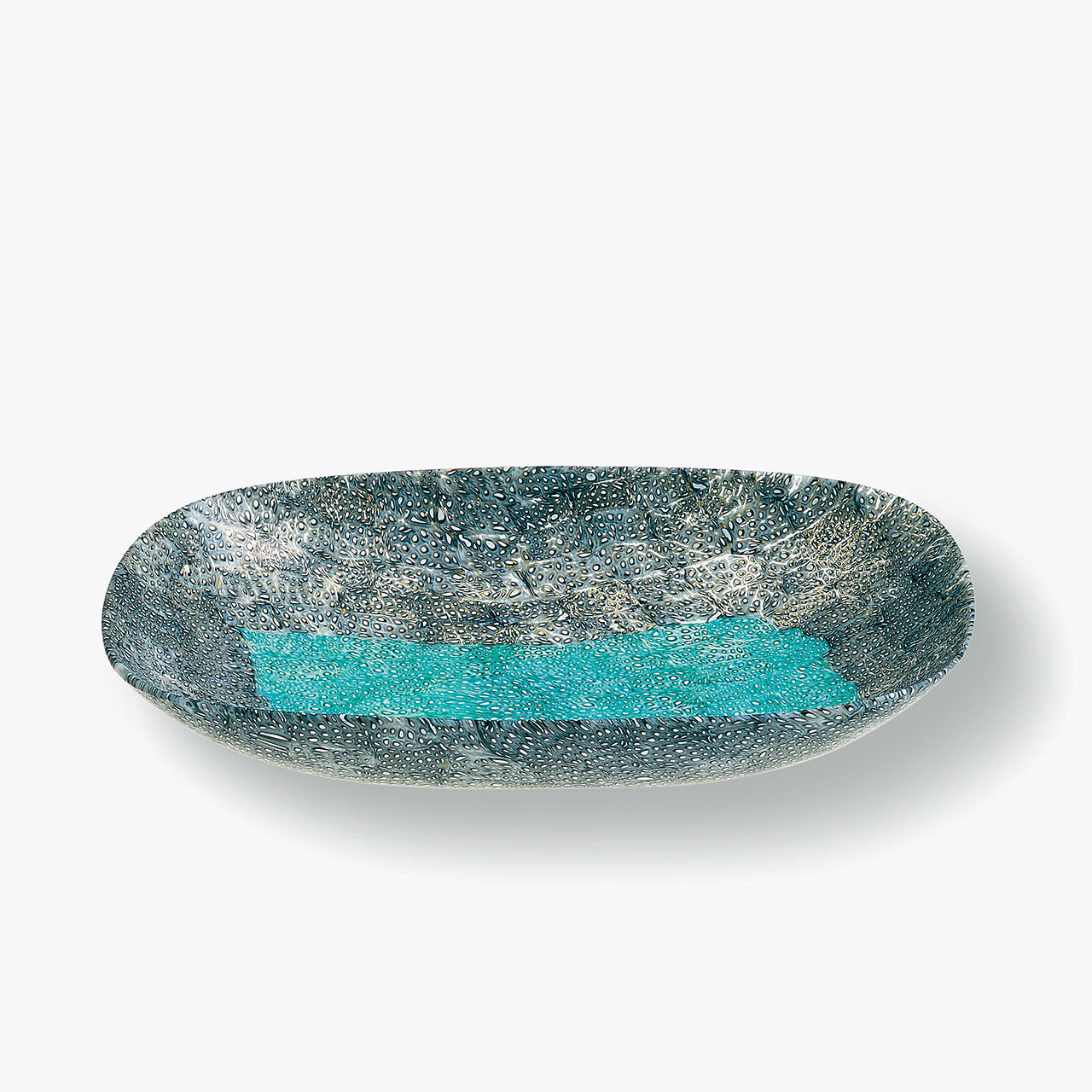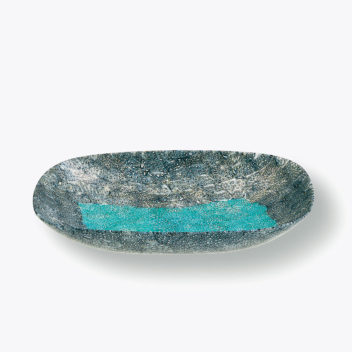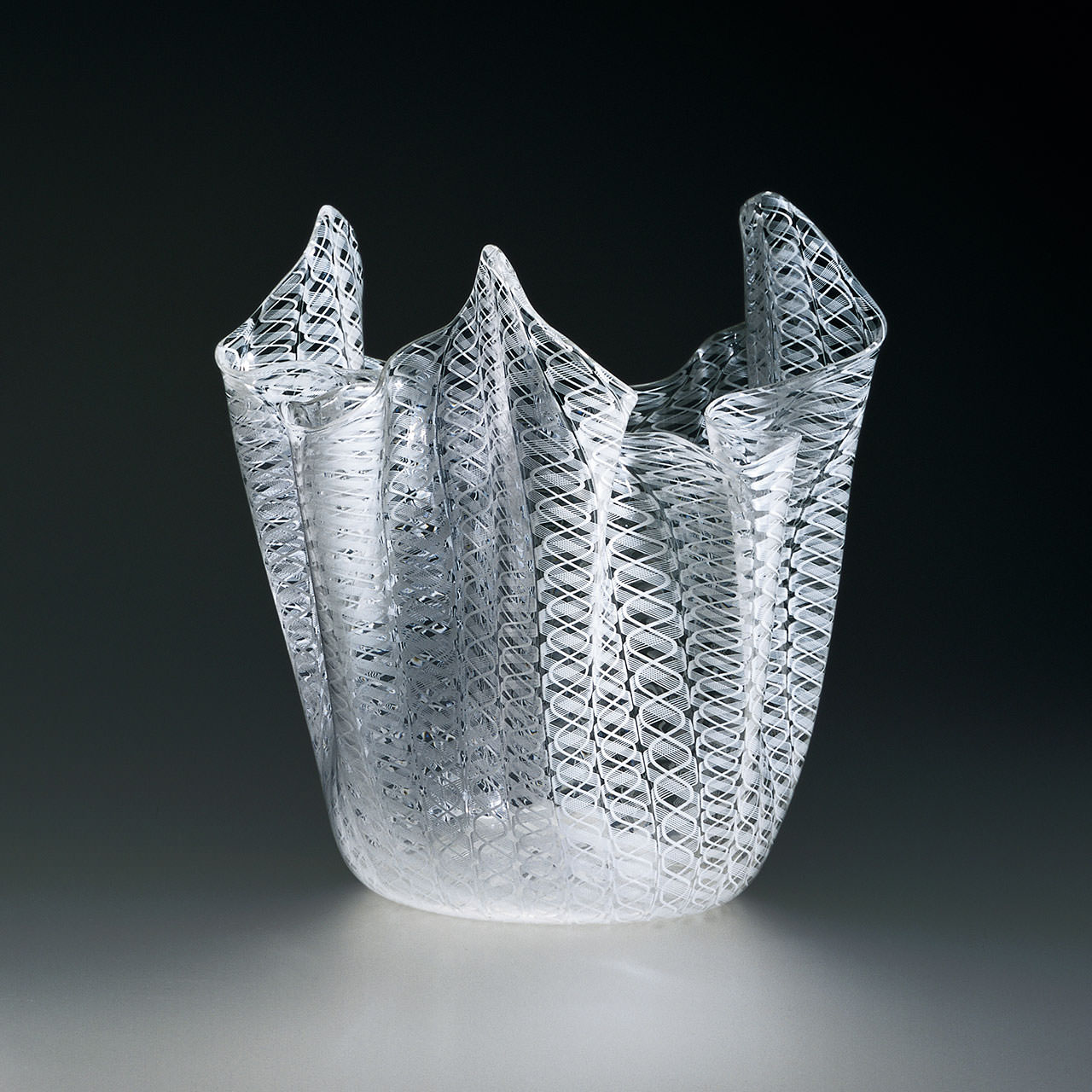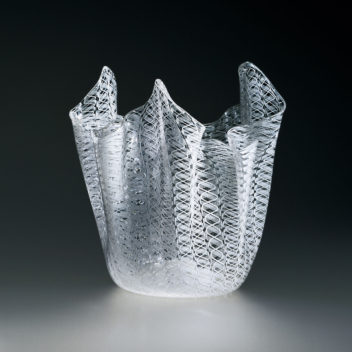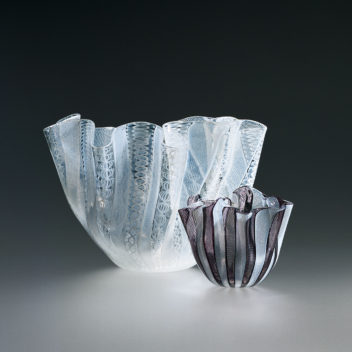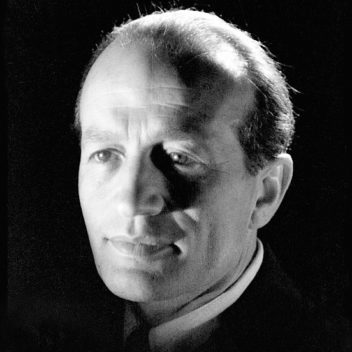
Paolo Venini 1895–1959
Born in Milan, the entrepreneur and designer Paolo Venini was a law school graduate. From 1921 until he died, he dedicated himself to the workshop he founded, the Vetri Soffiati Muranesi Venini & C. (through 1925, Vetri Soffiati Muranesi Cappellin Venini & C.). A man of marked entrepreneurial talent, his goal from the very beginning was to expand his company’s influence abroad and he sought the collaboration of the most talented artists and architects of his time, employing them as artistic directors of his company. He always worked at the side of his designers with the goal of anticipating and directing taste. He personally checked every collection produced by his furnace. And his confident aesthetic choices, along with the fine quality of the products, assured his workshop both critical and commercial success. He dedicated himself personally to design from the ’30s: his Diamante glass pieces date from 1936, and he created the murrine romane in collaboration with Carlo Scarpa. Following the war, he created bottles with brightly colored stripes, vessels in mosaico zanfirico and mosaico tessuto, glass mosaic windows, and engraved vessels. In collaboration with Bianconi, he created vessels such as the fazzoletti, which are a classic example of the production of the ’50s, and were enormously successful.
